Identifying Hot Spots of Critical Forage Supply in Dryland Nomadic Pastoralist Areas: A Case Study for the Afar Region, Ethiopia
Abstract
:1. Introduction
1.1. The Study Area
1.2. This Study
2. Material and Methods
2.1. The Base Map
2.2. Fodder Supply
2.3. Total Livestock Herds in the Afar Region
2.4. Following Herds: Seasonal Migration in the Afar Region
3. Results
3.1. Supply-Demand Balance under Static Conditions
3.2. Mapping the Migratory Routes by Sub-Clan and Season
3.3. The Full Migration Model
4. Sensitivity Analysis
5. Conclusions
Acknowledgments
Author Contributions
Conflicts of Interest
Appendix
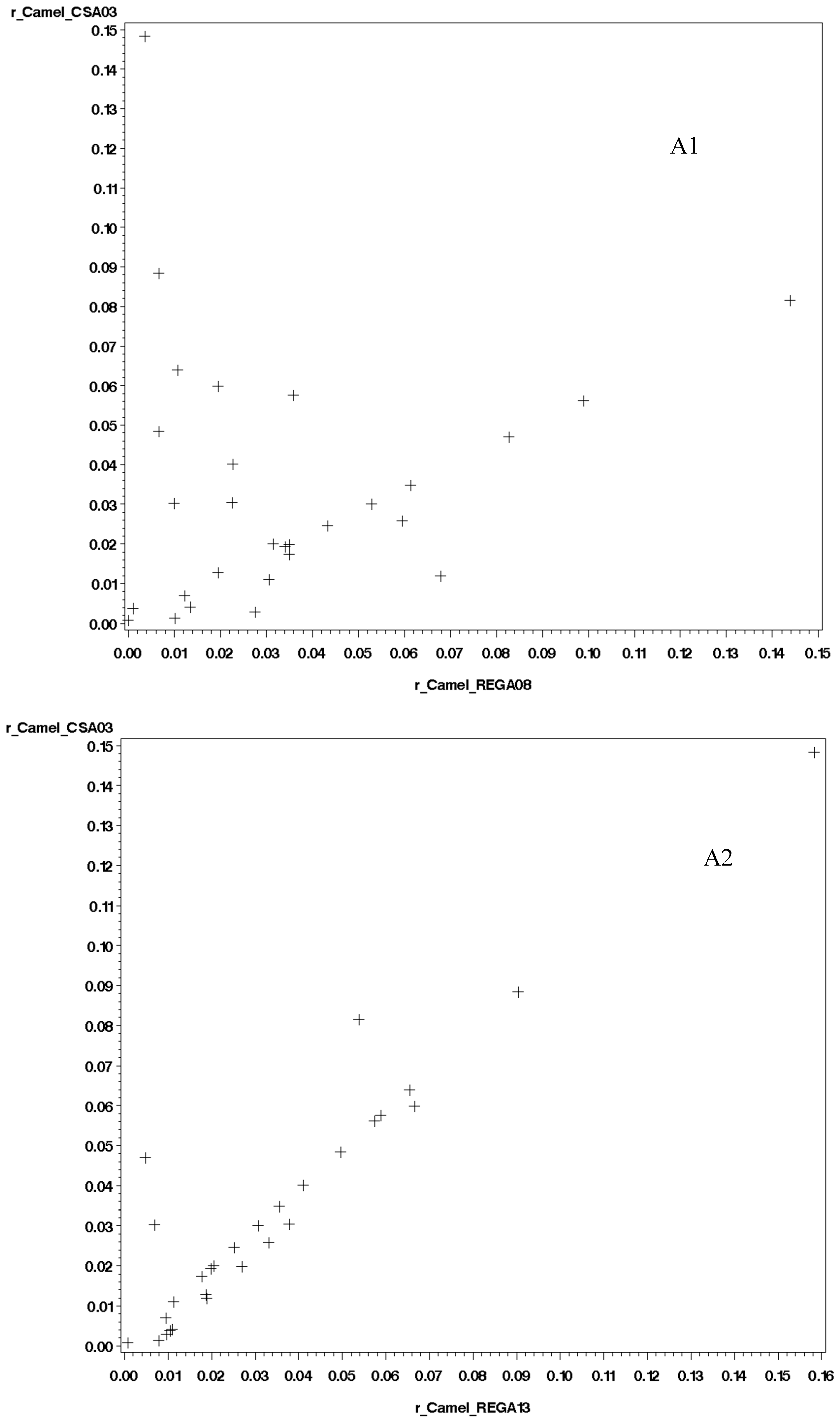

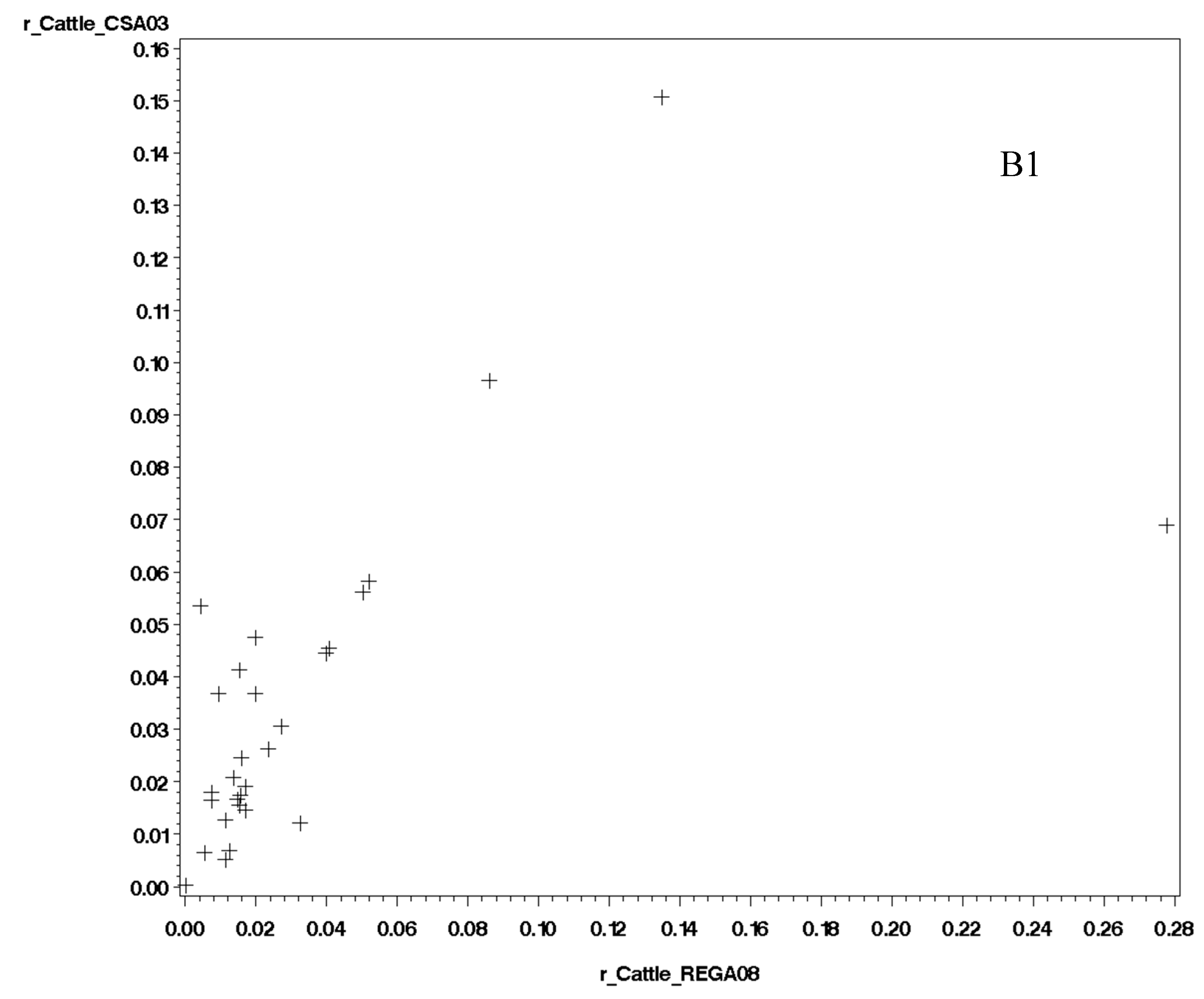
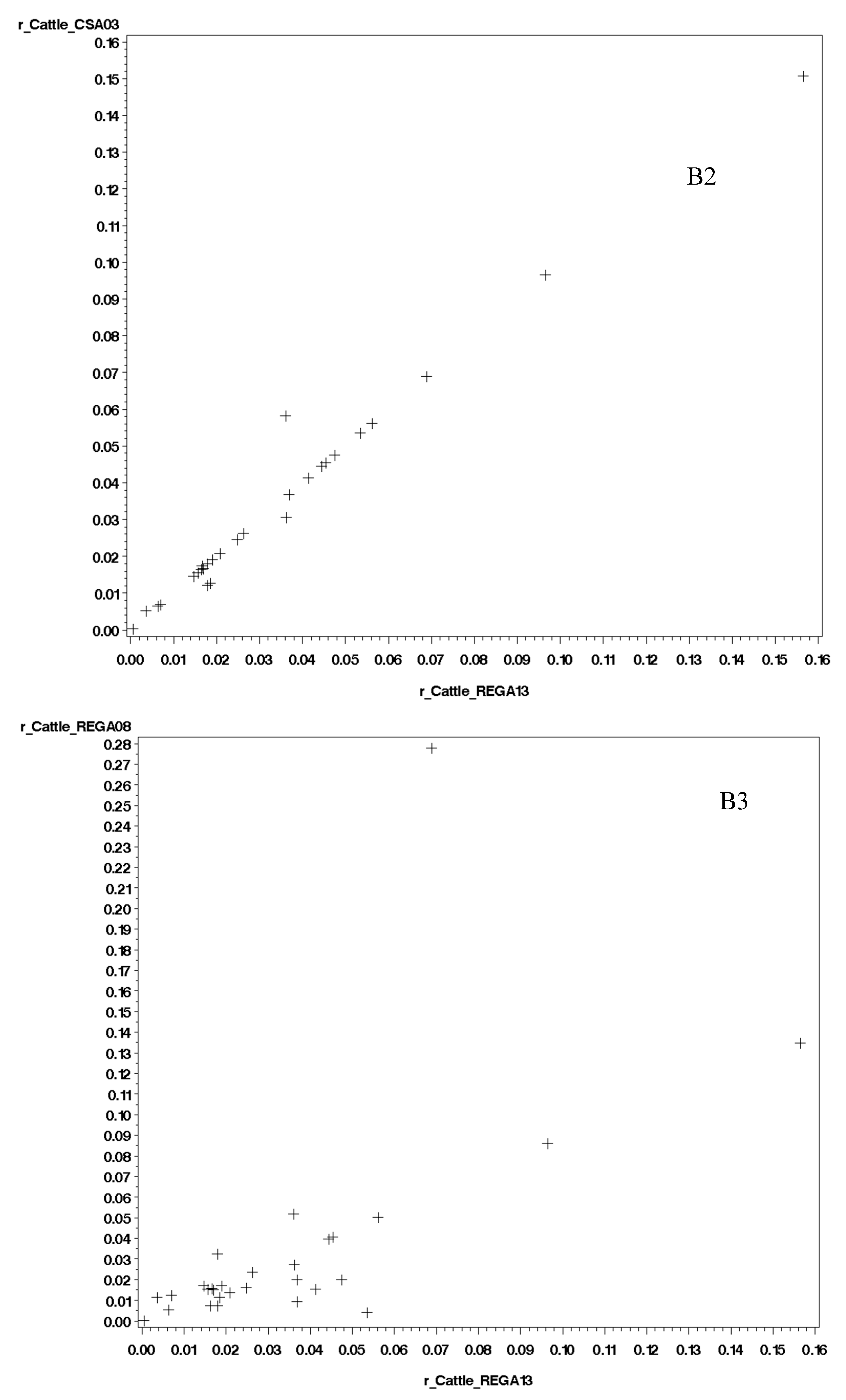
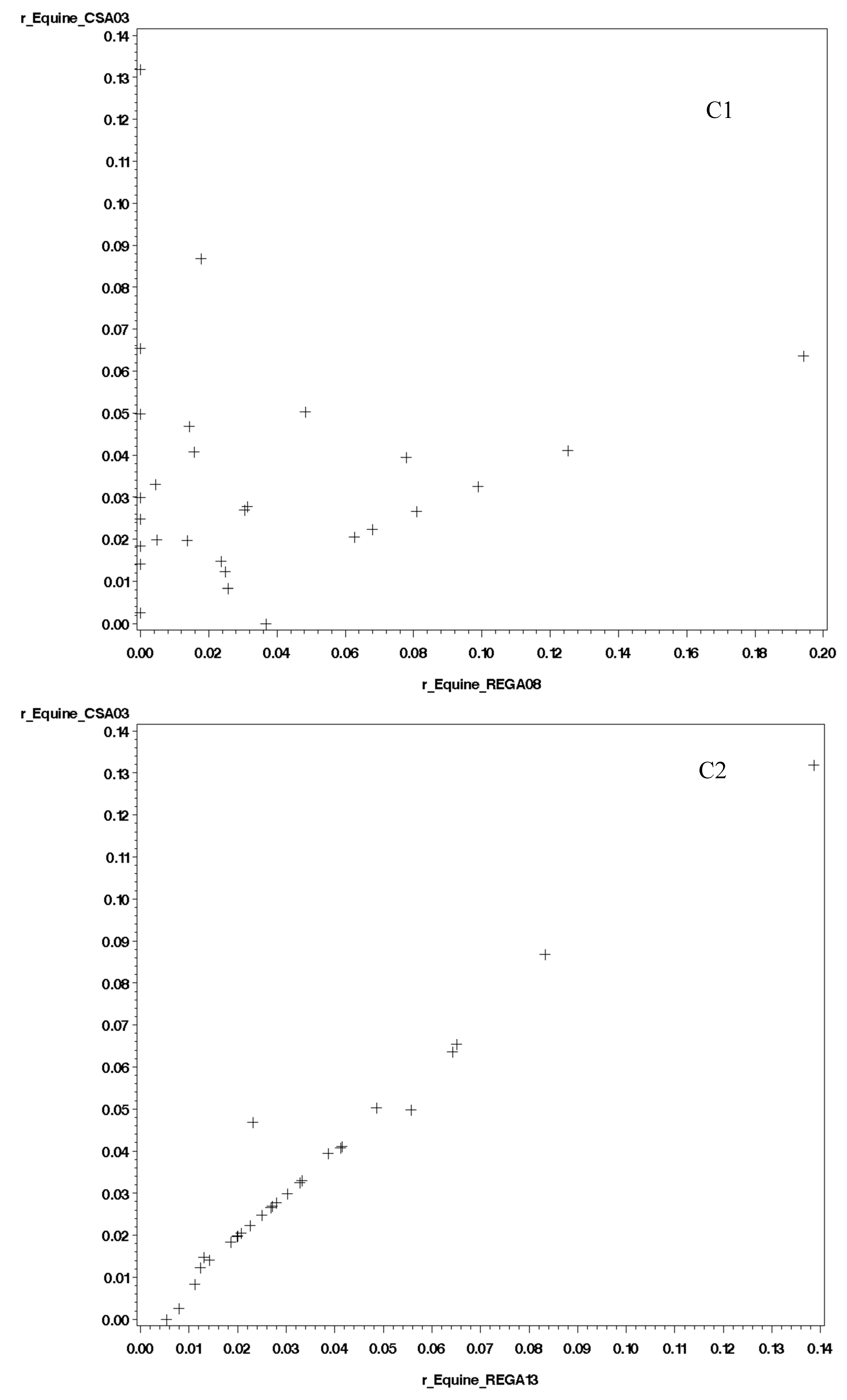
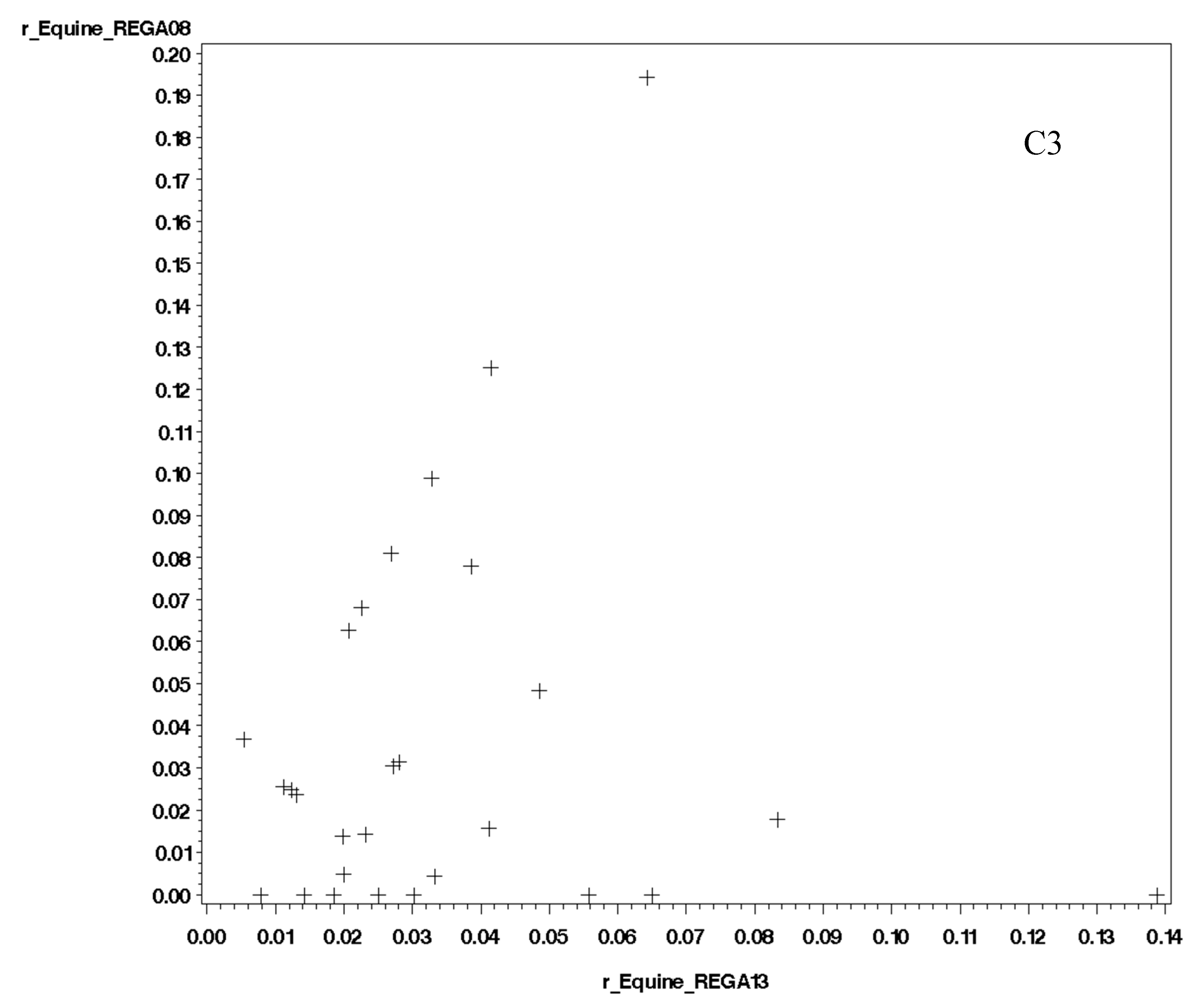

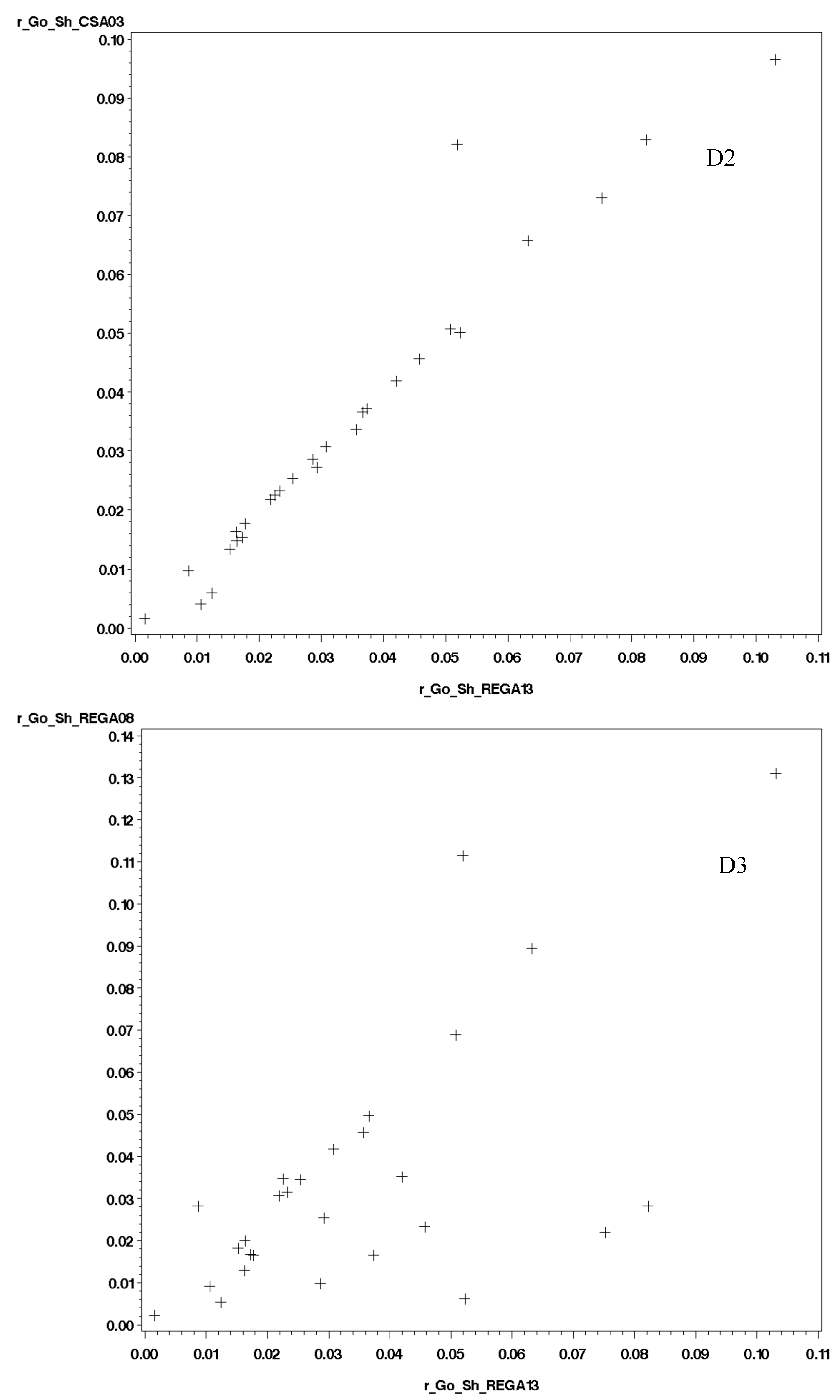
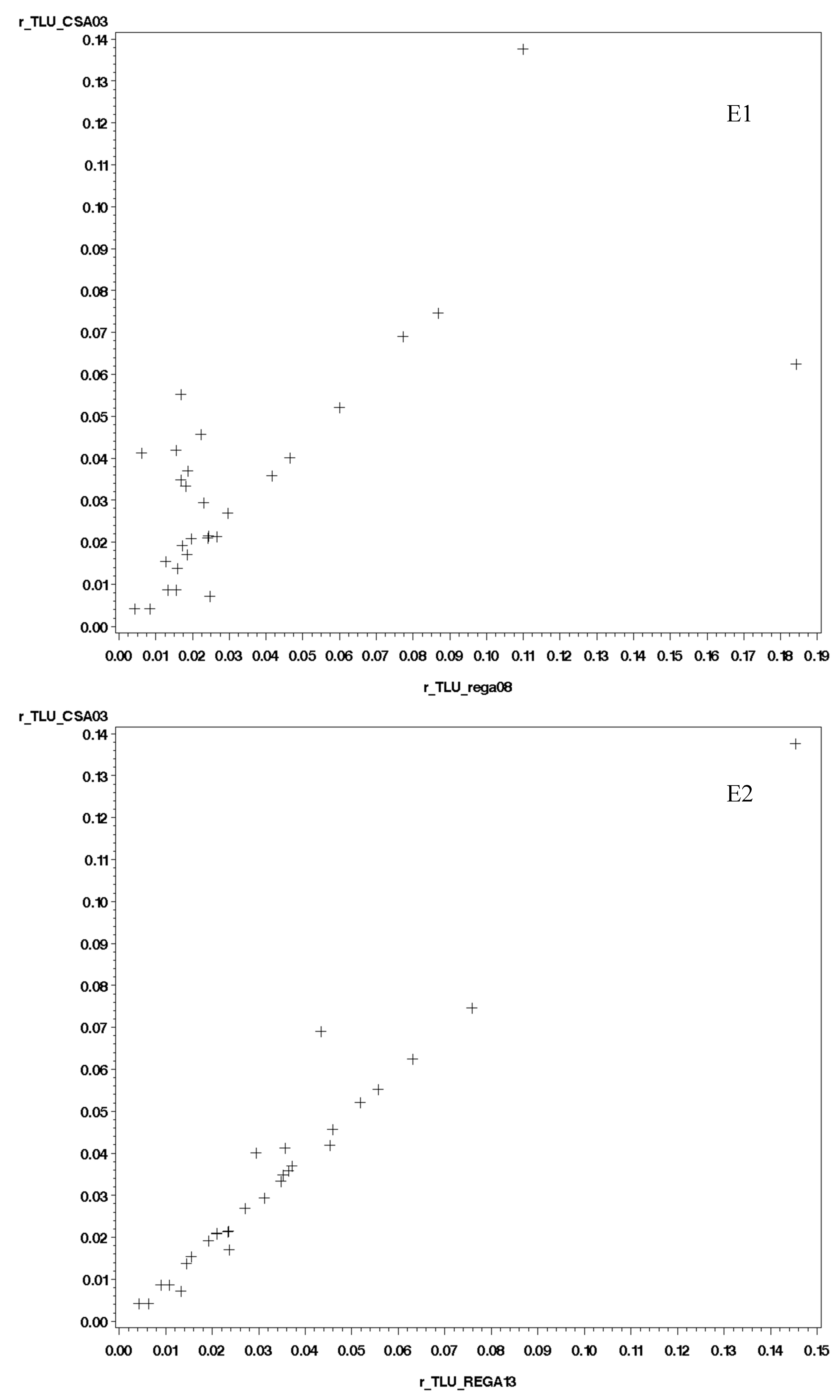

References
- UN. Global Drylands: A UN system-wide response Environment Management Group. 2011. Available online: http://www.unccd.int/Lists/SiteDocumentLibrary/Publications/Global_Drylands_Full_Report.pdf (accessed on 15 May 2017).
- Dodd, J.L. Desertification and degradation in sub-Saharan Africa—The role of livestock. BioScience 1994, 44, 28–34. [Google Scholar] [CrossRef]
- Homewood, K.; Rodgers, W.A. Pastoralism, conservation and the overgrazing controversy. In Conservation in Africa: People, Policies and Practice; Anderson, D., Grove, R., Eds.; Cambridge University Press: Cambridge, UK, 1987; 355p. [Google Scholar]
- Mearns, R. The Lie of the Land: Challenging Received Wisdom on the African Environment; Leach, M., Ed.; James Currey Ltd.: Oxford, UK, 1996; 240p. [Google Scholar]
- Lamprey, H.F. Pastoralism yesterday and today: The overgrazing controversy. In Tropical Savannas. Ecosystems of the World; Bourliere, F., Ed.; Elsevier: Amsterdam, The Netherlands, 1983; Volume 13, pp. 643–666. [Google Scholar]
- Sinclair, A.R.E.; Fryxell, J.M. The Sahel of Africa: Ecology of a disaster. Can. J. Zool. 1985, 63, 987–994. [Google Scholar] [CrossRef]
- Hardin, G. The tragedy of the commons. Science 1968, 163, 1243–1248. [Google Scholar] [CrossRef]
- Behnke, R.H.; Abel, N.O.J. Revisited: The overstocking controversy in semiarid Africa. World Anim. Rev. 1996, 87, 3–27. [Google Scholar]
- Ellis, J.E.; Swift, D.M. Stability of African pastoral ecosystems: Alternate paradigms and implications for development. J. Range Manag. 1988, 41, 450–459. [Google Scholar] [CrossRef]
- Sandford, S. Management of Pastoral Development in the Third World; John Wiley and Sons: New York, NY, USA, 1983; 316p. [Google Scholar]
- Sullivan, S. Towards a non-equilibrium ecology: Perspectives from an arid land. J. Biogeogr. 1996, 23, 1–5. [Google Scholar]
- Sullivan, S.; Rohde, R. On non-equilibrium in arid and semi-arid grazing systems. J. Biogeogr. 2002, 29, 1595–1618. [Google Scholar] [CrossRef]
- NIM. Nomads, the facts. New Internationalist Magazine. Available online: http://newint.org/features/1995/04/05/facts/ (accessed on 10 September 2016).
- Fernandez-Gimenez, M.E. The role of mongolian nomadic pastoralists ecological knowledge in rangeland management. Ecol. Appl. 2000, 10, 1318–1326. [Google Scholar] [CrossRef]
- Warioa, H.T.; Robab, H.G.; Kaufmann, B. Responding to mobility constraints: Recent shifts in resource use practices and herding strategies in the Borana pastoral system, southern Ethiopia. J. Arid Environ. 2016, 127, 222–234. [Google Scholar] [CrossRef]
- Warren, A. Changing Understandings of African Pastoralism and the Nature of Environmental Paradigms. Trans. Inst. Br. Geogr. 1995, 20, 193–203. [Google Scholar] [CrossRef]
- Desta, S.; Coppock, D.L. Pastoralism under Pressure: Tracking System Change in Southern Ethiopia. Hum. Ecol. 2004, 32, 465–486. [Google Scholar] [CrossRef]
- Butt, B. Ecology, mobility and labour: Dynamic pastoral herd management in an uncertain world. Rev. Sci. Tech. 2016, 35, 461–472. [Google Scholar] [CrossRef] [PubMed]
- Salpeteur, M.; Madella, M.; Patel, H.R.; Reyes-García, V. Adaptation, Access to Resources and Mobility: From Contemporary Pastoral Systems to Ancient Societies. Nomadic Peoples; The White Horse Press: Winwick, Cambridgeshire, UK, 2017; Volume 21, pp. 191–213. [Google Scholar]
- Hundie, B. Property Rights among Afar Pastoralists of Northeastern Ethiopia: Forms, Changes and Conflicts. In Proceedings of the Survival of the Commons: Mounting Challenges and New Realities. Eleventh Conference of the International Association for the Study of Common Property, Bali, Indonesia, 19–23 June 2006. [Google Scholar]
- Rass, N. Policies and Strategies to Address the Vulnerability of Pastoralists in Sub-Saharan Africa; PPLPI Working Paper No. 37; Pro-Poor Livestock Policy Initiative; Food and Agriculture Organization of the United Nations: Rome, Italy, 2006. [Google Scholar]
- Biopact. ICRISAT launches pro-poor biofuels initiative in drylands. 2007. Available online: http://biopact.com/2007/03/icrisat-launches-pro-poor-biofuels.html (accessed on 15 May 2015).
- Cotula, L.; Vermeulen, S.; Leonard, R.; Keeley, J. Land Grab or Development Opportunity? Agricultural Investment and International Land Deals in Africa; IIED/FAO/IFAD: London, UK/Rome, Italy, 2009; ISBN 978-1-84369-741-1. [Google Scholar]
- Scoones, I. New Directions in Pastoral Development in Africa. In Living with Uncertainty. New Directions in Pastoral Development in Africa; Scoones, I., Ed.; Intermediate Technology Publications Ltd.: London, UK, 1994; pp. 1–36. [Google Scholar]
- Deressa, T. Measuring the Economic Impact of Climate Change on Ethiopian Agriculture: Ricardian Approach; CEEPA Discussion Paper No. 25; Centre for Environmental Economics and Policy in Africa, University of Pretoria: Pretoria, South Africa, 2006. [Google Scholar]
- Kohyani, P.T.; Bossuyt, B.; Bonte, D.; Hoffmann, M. Grazing as a management tool in dune grasslands: Evidence of soil and scale dependence of the effect of large herbivores on plant diversity. Biol. Conserv. 2008, 141, 1687–1694. [Google Scholar] [CrossRef]
- Ebrahimi, A.; Milotic, T.; Hoffmann, M. A herbivore specific grazing capacity model accounting for spatio-temporal environmental variation: A tool for a more sustainable nature conservation and rangeland management. Ecol. Model. 2010, 221, 900–910. [Google Scholar] [CrossRef]
- Keyzer, M.A.; Merbis, M.D.; Pavel, I.F.P.W.; Van Wesenbeeck, C.F.A. Diet shifts towards meat and the effects on cereal use: Can we feed the animals in 2030? Ecol. Econ. 2005, 55, 187–202. [Google Scholar] [CrossRef]
- De Han, C. Livestock Development: Implications for Rural Poverty, the Environment, and Global Food Security; The World Bank: Washington, DC, USA, 2001. [Google Scholar]
- CSA. Central Statistical Agency; Federal Democratic Republic of Ethiopia. 2016. Available online: http://www.csa.gov.et/images/documents/pdf_files/regional/Afar.pdf (accessed on 15 October 2016).
- Rettberg, S. Der Umgang mit Risiken im Spannungsfeld zwischen Konflikten und Nahrungskrisen. Eine politisch-geographische Untersuchung in der Afar Region Ethiopien. Ph.D. Thesis, Bayreuth University, Bavaria, Germany, 2008. [Google Scholar]
- Hundie, B. Pastoralism, Institutions and Social Interaction: Explaining the Coexistence of Conflict and Cooperation in Pastoral Afar, Ethiopia; Shaker Verlag GmbH: Aachen, Germany, 2008. [Google Scholar]
- Hundie, B. Conflicts between Afar pastoralists and their neighbors: Triggers and motivations. Int. J. Confl. Violence 2010, 4, 135–148. [Google Scholar]
- Ame, A. Cross-border livestock trade and small arms and conflict in pastoral areas of the horn of Africa: Case study from southern Ethiopia and northern Kenya. In Proceedings of the Survival of the Commons: Mounting Challenges and New Realities, the Eleventh Conference of the International Association for the Study of Common Property, Bali, Indonesia, 19–23 June 2006; Available online: http://dlc.dlib.indiana.edu/archive/00001823/00/Ame_Abdurahman.pdf (accessed on 1 April 2015).
- Bekele, K. Ethiopia: Promoting Bio-Fuel. The Reporter (Addis Ababa). 2007. Available online: http://allafrica.com/stories/200711050688.html (accessed on 12 May 2015).
- Eshetu, J. Overview of the potentials and constraints on export of meat and livestock. In Proceedings of the national workshop on managing animal health constraints to export marketing of meat and livestock, MoARD–FAO, Addis Ababa, Ethiopia, 27–28 April 2004. [Google Scholar]
- LMA. Meat Exports Market Study, MoARD; Livestock Marketing Authority: Addis Ababa, Ethiopia, 2004. [Google Scholar]
- Shapiro, B.I.; Gebru, G.; Desta, S.; Negassa, A.; Negussie, K.; Aboset, G.; Mechal, H. Ethiopia Livestock Master Plan Roadmaps for Growth and Transformation A Contribution to the Growth and Transformation Plan II (2015–2020); Ministry of Agriculture Livestock Resources Development: Addis Ababa, Ethiopia, 2015. [Google Scholar]
- The Ethiopian Herald. Ethiopia Eyeing 12 Million USD from Ramadan Meat Export: Institute. 2017. Available online: https://www.alleastafrica.com/2017/06/08/ethiopia-eyeing-12-million-usd-from-ramadan-meat-export-institute/ (accessed on 8 November 2017).
- Thornton, P.K.; Jones, P.G.; Owiyo, T.; Kruska, R.L.; Herrero, M.; Kristjanson, P.; Notenbaert, A.; Bekele, N.; Omolo, A. Mapping Climate Vulnerability and Poverty in Africa; Report to the Department for International Development; ILRI: Nairobi, Kenya, 2006. [Google Scholar]
- Hundie, B.; Padmanabhan, M. The Transformation of the Commons: Coercive and Non-Coercive Ways. In Collective and Property Rights for Poverty Reduction: Lessonsfrom a Global Research Project; IFPRI: Washington, DC, USA, 2012. [Google Scholar]
- Beyene, F. Institutional arrangements in mutually beneficial grazing systems: An example from herding communities in Ethiopia. J. Land Use Sci. 2014, 9, 438–452. [Google Scholar] [CrossRef]
- Beyene, F. Incentives and Challenges in Community-Based Rangeland Management: Evidence from Eastern Ethiopia. Land Degrad. Dev. 2015, 26, 502–509. [Google Scholar] [CrossRef]
- Mulatu, A.; Bekure, S. The Need to Strengthen Land Laws in Ethiopia to Protect Pastoral Rights. In Pastoralism and Development in Africa: Dynamic Change at the Margins; Andy, C., Jeremy, L., Ian, S., Eds.; Routledge: Abingdon, UK; New York, NY, USA, 2013; pp. 186–194. [Google Scholar]
- USAID. Ethiopia—Strengthening Land Administration Program (ELAP). 2012. Available online: http://www.moa.gov.et/.../Pastoral...pastoral+Land.../eba08eee6d8c-a8f (accessed on 12 December 2016).
- Little, P.D.; Behnke, R.; McPeak, J.; Gebru, G. Policy Options for Pastoral Development in Ethiopia. 2010. Available online: http://www.researchgate.net/publication/257993033 (accessed on 2 April 2015).
- Abbink, J. Land to the Foreigners: Economic, legal, and socio-cultural aspects of new land acquisition schemes in Ethiopia. J. Contemp. Afr. Stud. 2011, 29, 513–535. [Google Scholar] [CrossRef]
- Sonneveld, B.G.J.S.; Pande, S.; Keyzer, M.A.; Georgis, K.; Seid Ali, A.; Takele, A. Land degradation and overgrazing in the Afar Region, Ethiopia: A spatial analysis using Rainfall Use Efficiency. In Land Degradation and Desertification: Assessment, Mitigation and Remediation; Zdruli, P., Pagliai, M., Cano, S.K.A.F., Eds.; Springer: Dordrecht, The Netherlands, 2010; pp. 97–110. [Google Scholar]
- Abdulatife, M. Training Report on Spatial Data Management; Afar Pastoral and Agro-pastoral Research Institute (APARI): Semera, Ethiopia, 2016. [Google Scholar]
- Sutcliffe, P. The Woody Biomass Project. reCOMMEND 2006, 3, 1–4. [Google Scholar]
- GAEZ v3.0 Global Agro-Ecological Zones. Available online: http://www.gaez.iiasa.ac.at (accessed on 8 January 2015).
- De Leeuw, P.N.; Tothill, J.C. The concept of carrying capacity in sub-Saharan Africa: Myth or reality? In Range Ecology at Disequilibrium: New Models of Natural Variability and Pastoral Adaptation in African Savannas; Behnke, R.H., Scoones, I., Kerven, C., Eds.; Overseas Development Institute: London, UK, 1993; pp. 77–88. [Google Scholar]
- Western, D.; Grimsdell, J.J.R. Measuring the Distribution of Animals in Relation to the Environment; Handbook No. 2; African Wildlife Leadership Foundation: Nairobi, Kenya, 1979. [Google Scholar]
- Too, D.K. Effects of Defoliation Frequency and Intensity on Production of Four Burned and Unburned Bushed Grassland Communities in South-Central Kenya. Master’s Thesis, Texas A & M University, College Station, TX, USA, 1985. [Google Scholar]
- Braun, H.M.H. Primary production in the Serengeti: Purpose, methods and some results of research. Ann. Univ. d'Abidjan (E) 1973, 6, 171–188. [Google Scholar]
- Van Wijngaarden, W. Elephants-Trees-Grass-Grazers: Relationships between Climate, Soil, Vegetation and Large Herbivores in a Semi-Arid Savanna Ecosystem; No. 4; ITC Publ.: Enschede, The Netherlands, 1985. [Google Scholar]
- Sinclair, A.R.E. The eruption of the ruminants. In Serengeti, Dynamics of an Ecosystem; Sinclair, A.R.E., Norton-Griffiths, M., Eds.; University of Chicago Press: Chicago, IL, USA, 1979; pp. 82–103. [Google Scholar]
- Potter, H.L. Aspects of Climate, Herbage Growth and Animal Production in a Semi-Arid Area of Kenya. Ph.D. Thesis, University of Nairobi, Nairobi, Kenya, 1985. [Google Scholar]
- Deshmuk, I.K. A common relationship between precipitation and grassland peak biomass for East and southern Africa. Afr. J. Ecol. 1984, 22, 181–186. [Google Scholar] [CrossRef]
- Gebremeskel, K. Rangeland Production and Carrying Capacity of Afar Regional State; Consultancy Report; Werer Agricultural Research Center of the Ethiopian Institute for Agricultural Research: Werer, Ethiopia, 2012. [Google Scholar]
- Le Houérou, H.N.; Hoste, C.H. Rangeland production and annual rainfall relations in the Mediterranean Basin and in the African Sahelo-Sudanian zone. J. Rangel. Manag. 1977, 30, 183–189. [Google Scholar] [CrossRef]
- Dye, P.J.; Spear, P.T. The effects of bush clearing and rainfall variability on grass yield and composition in southwest Zimbabwe. J. Agric. Res. 1982, 20, 103–118. [Google Scholar]
- De Leeuw, P.N.; Nyambaka, R. The prediction of rangeland primary 18 production from rainfall data in arid and semi-arid Eastern Africa. In Proceedings of the Third PANESA Workshop: 260–268 ILCA; Dzowela, B.H., Ed.; International Livestock Centre for Africa: Addis Ababa, Ethiopia, 1988. [Google Scholar]
- CSA. Agricultural Sample Survey 2010/11 [2003 e.c.] Volume ii. Report on Livestock and Livestock Characteristics (Private Peasant Holdings); Federal Democratic Republic of Ethiopia, Central Statistical Agency: Addis Ababa, Ethiopia, 2011. [Google Scholar]
- CSA. Pastoral Areas Livestock Enumeration, Results for Afar Region; The Central Agricultural Census Commission; Central Statistical Authority: Addis Ababa, Ethiopia, 2003. [Google Scholar]
- Behnke, R. The Contribution of Livestock to the Economies of IGAD Member States. Study Findings, Application of the Methodology in Ethiopia and Recommendations for Further Work; IGAD Livestock Policy Initiative Odessa Centre: Great Wolford, UK, 2010. [Google Scholar]
- ESGPIP. Afar Region. The Ethiopia Sheep and Goat Productivity Improvement Program. Available online: http://www.esgpip.org/Afar.html (accessed on 15 June 2015).
- LDMPS. Livestock Development Master Plan Study for 2006 (Phase I, Volume B); Ministry of Agriculture, Government of Ethiopia: Addis Ababa, Ethiopia, 2007.
- BoFED. Regional Atlas 2: Afar National Regional State; Finance and Economic Development Bureau: Semera, Ethiopia, 2009.
- Abdullatif, M.; Semera, Ethiopia. Afar Livestock statistics from the Afar Pastoral & Agricultural Development Bureau. Personal communication, 30 January 2016. [Google Scholar]
- Amsalu, T.; Addisu, S. Assessment of Grazing Land and Livestock Feed Balance in Gummara-Rib Watershed, Ethiopia. Curr. Agric. Res. J. 2014. [Google Scholar] [CrossRef]
| 1 | According to the type of trekking patterns pastoralists are called nomadic (irregular movements) or transhumant (regular movements between fixed locations). |
| 2 | Ethiopia is administratively divided into regional states and chartered cities, zones, woredas (districts) and kebeles (wards). |
| 3 | The Afar as ethnic group occupy a territory that comprises the Afar Region of Ethiopia, northern Djibouti and southern point of Eritrea. The territorial and political unit in the Afar Region is the sub-clan which retains a relatively high degree of political, social, and economic independence. |
| 4 | Tropical livestock units allow to compare grazing demand of different species in common units. |
| 5 | A clear reference of TLU numbers in Gebremeskel 2012 was missing and is not further elaborated. |
| 6 | Sub-clan areas corresponding to Woreda’s are identified by crossing both maps. |
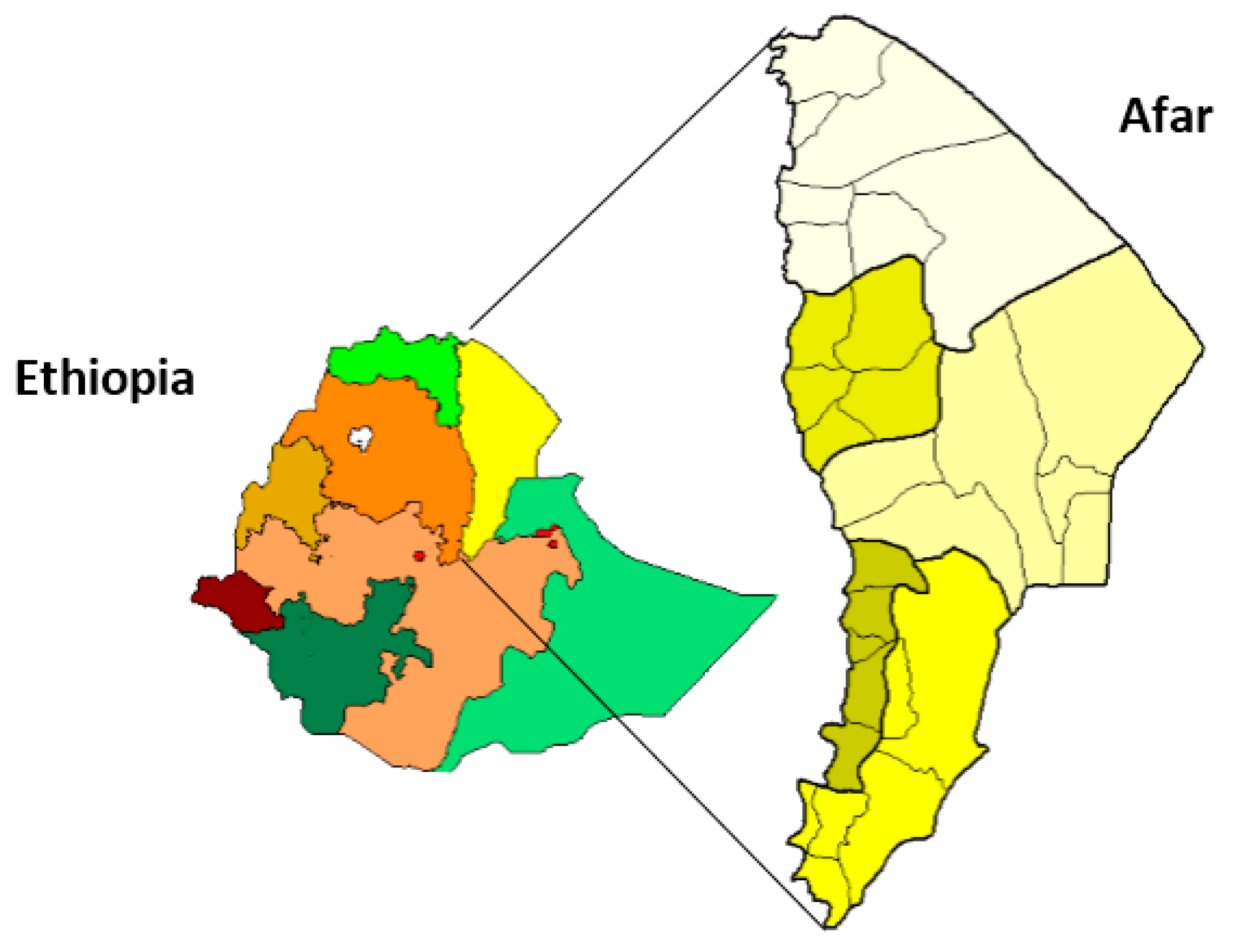

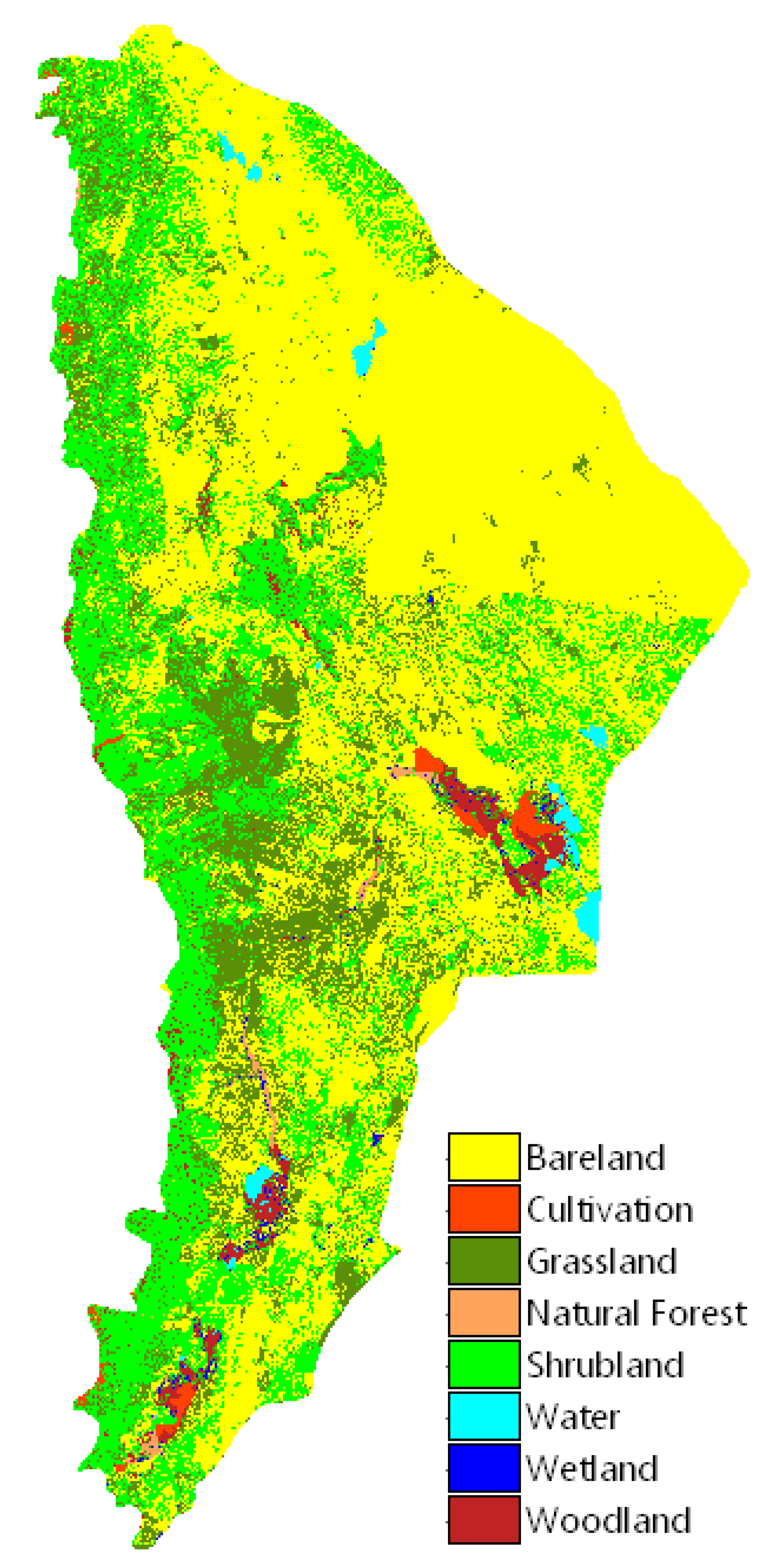
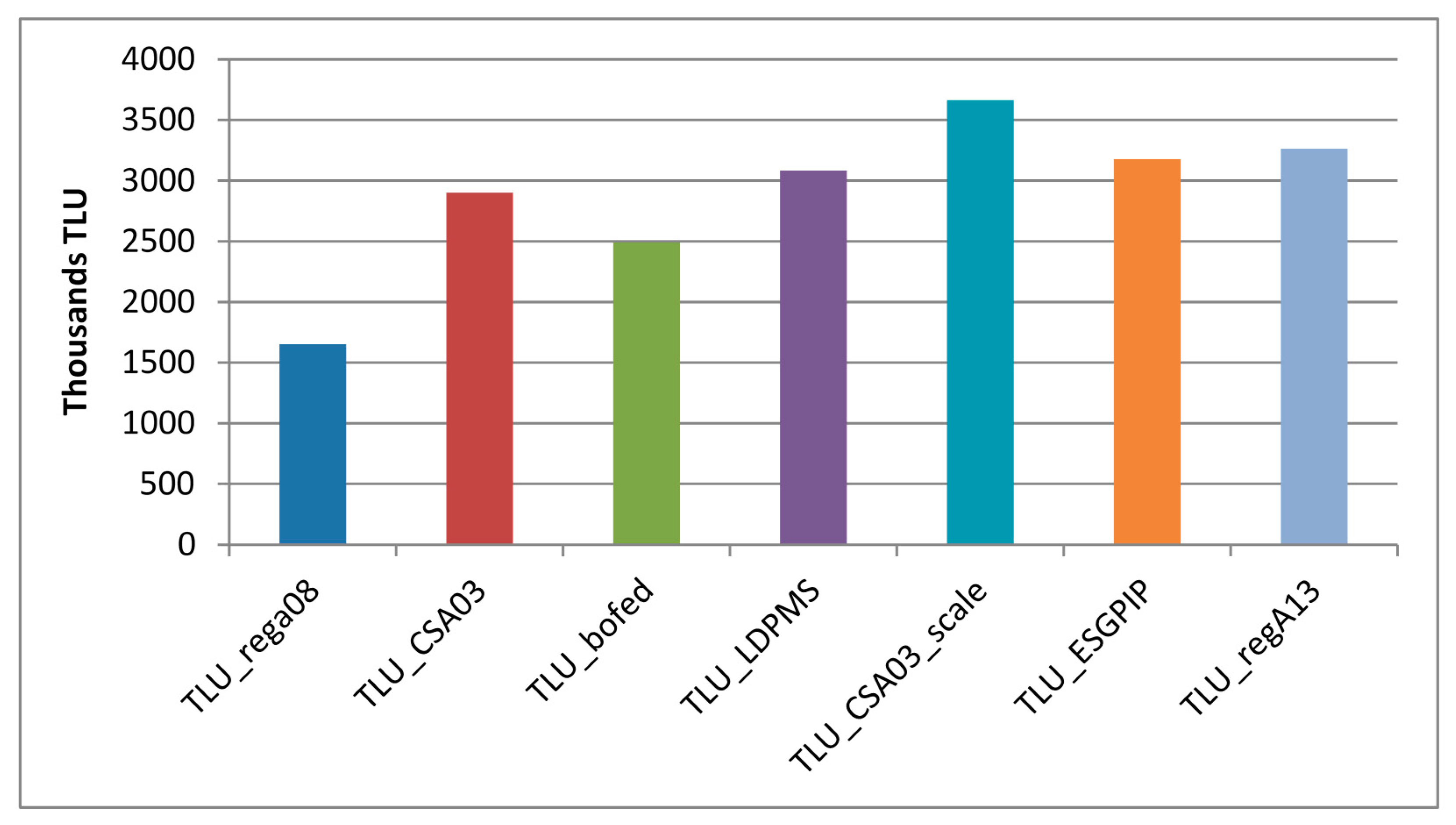

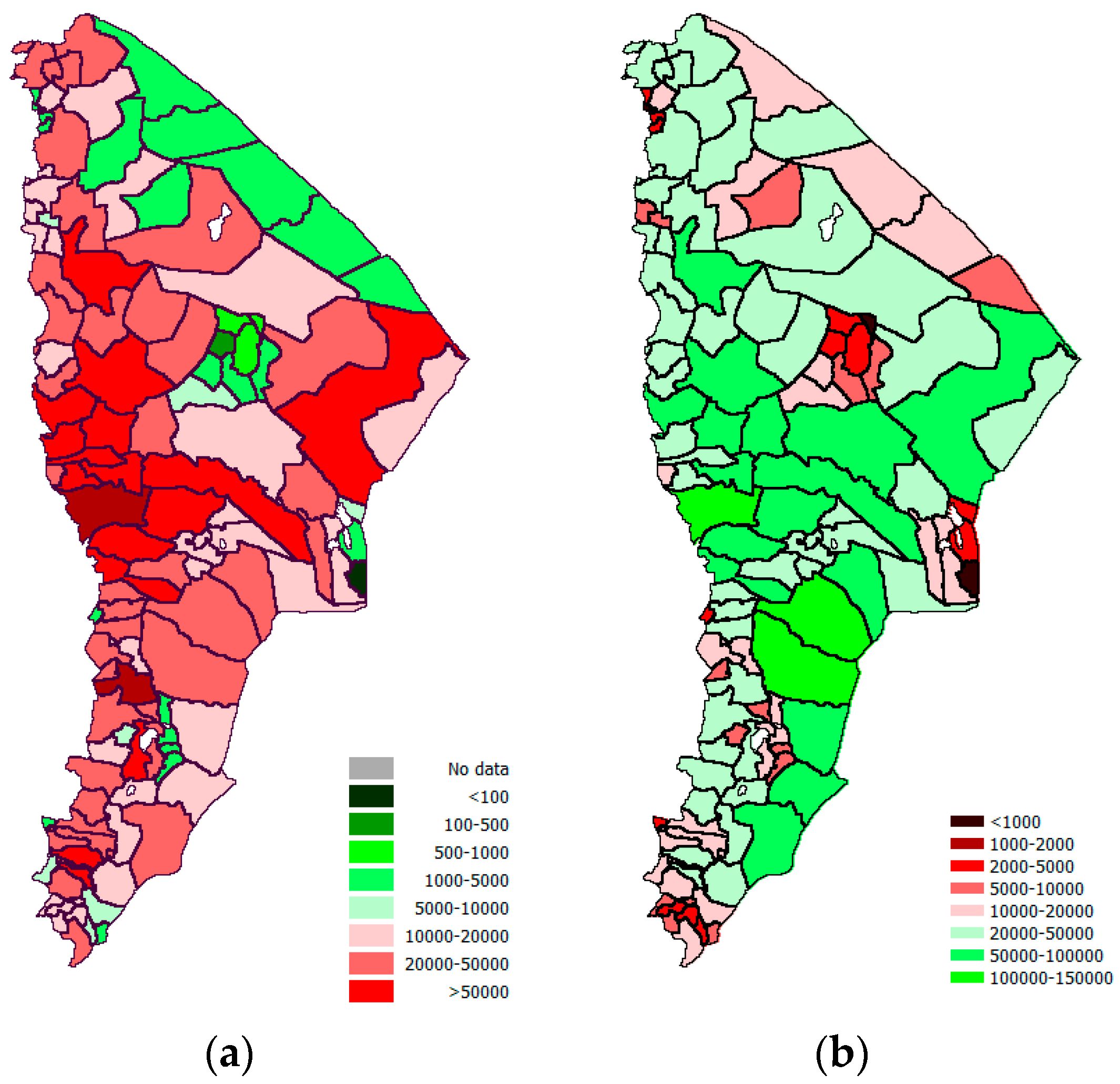
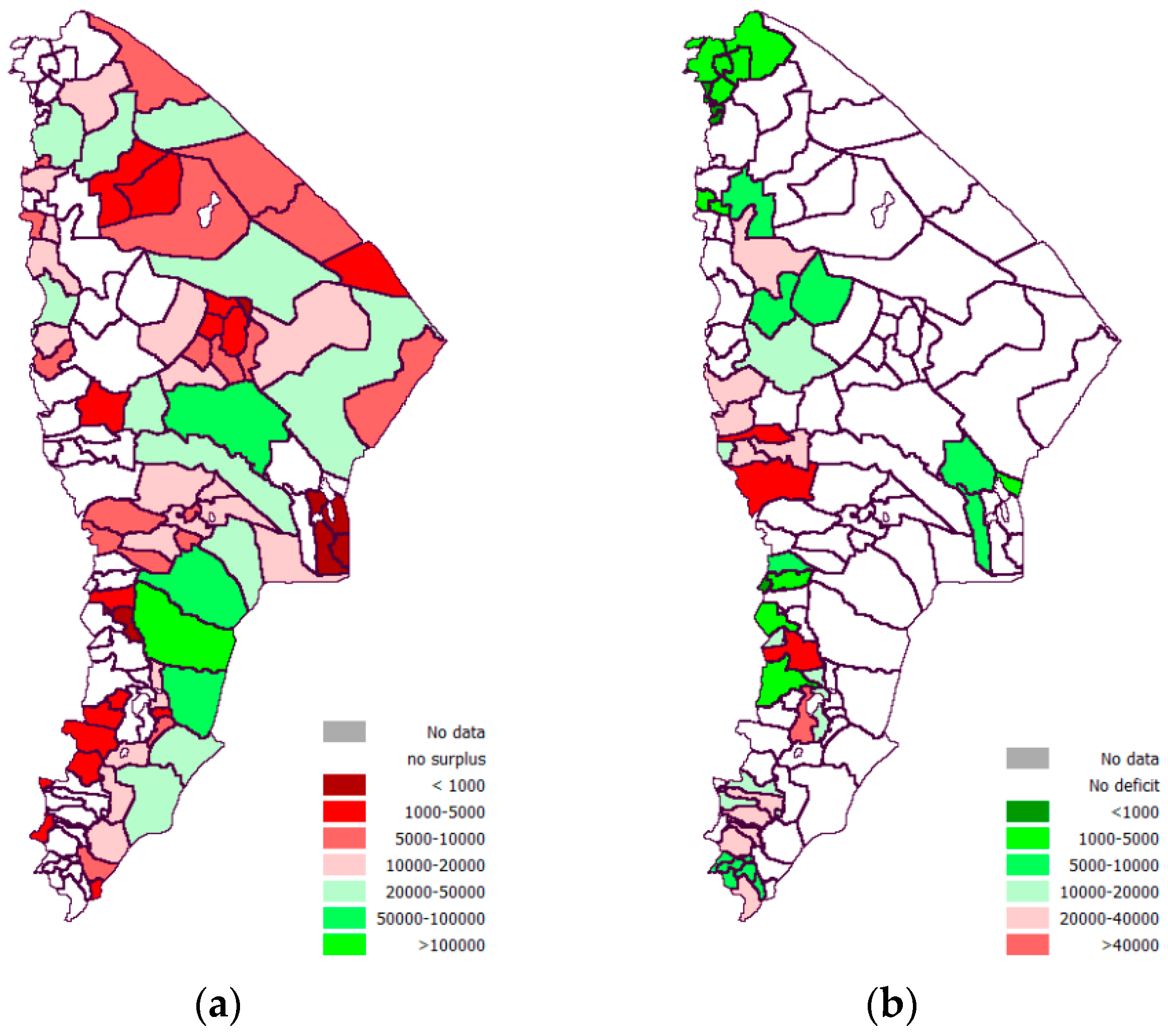
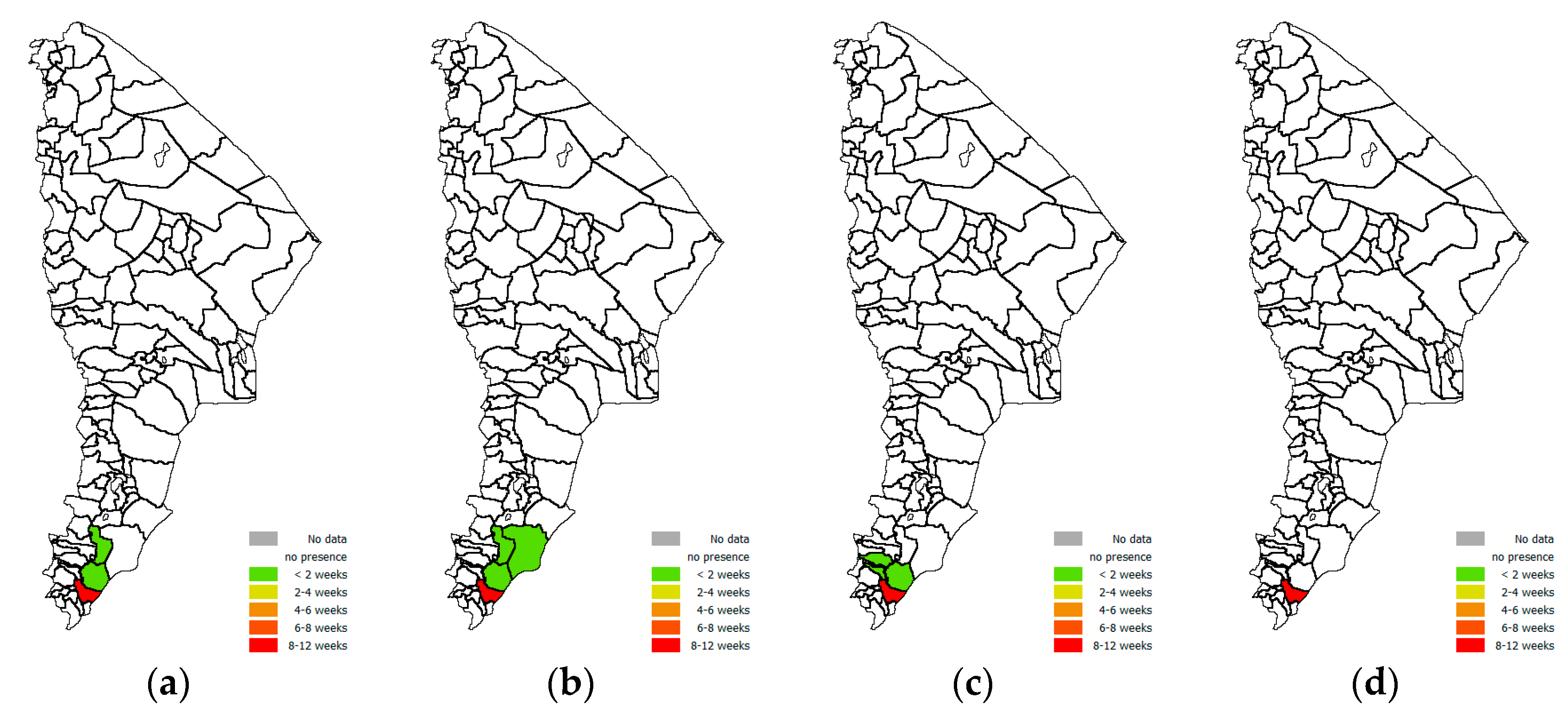
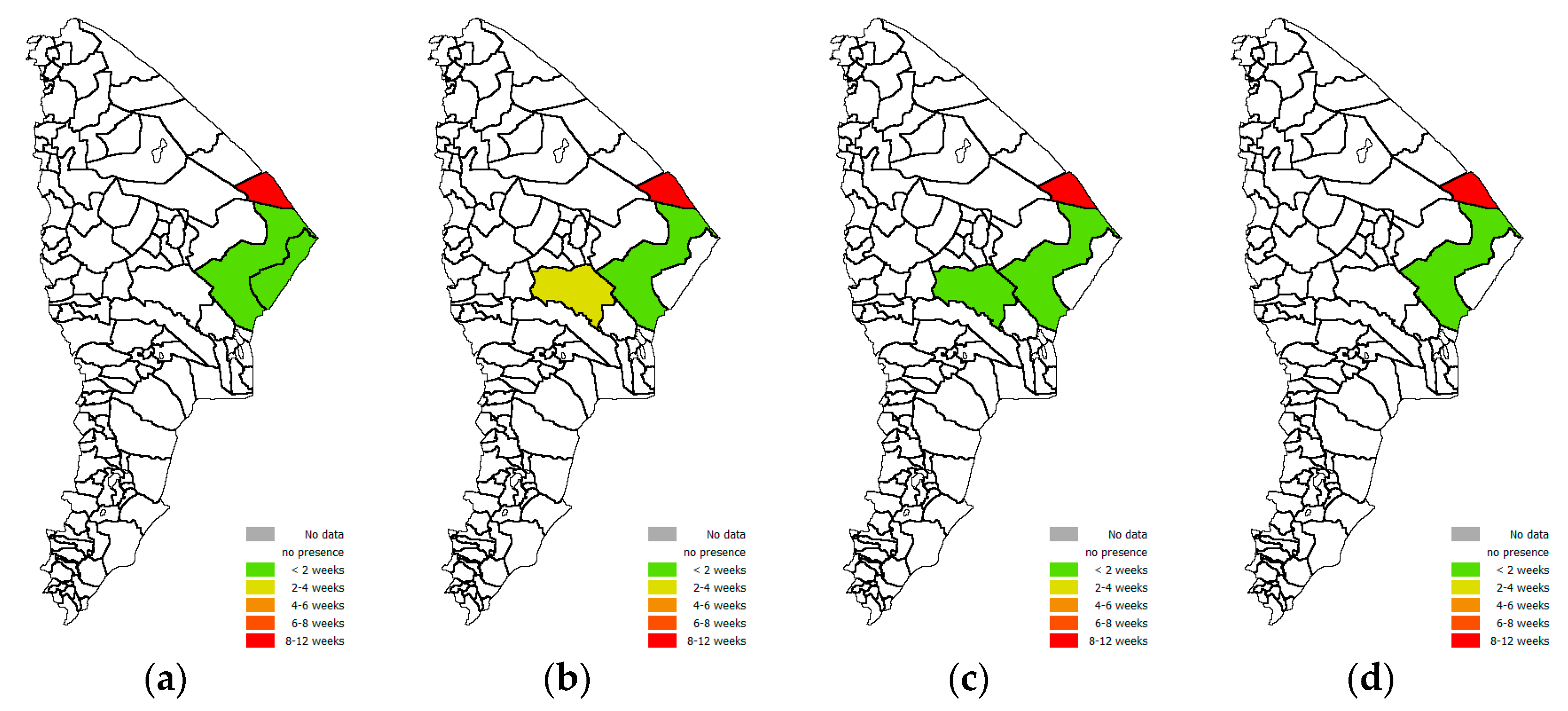
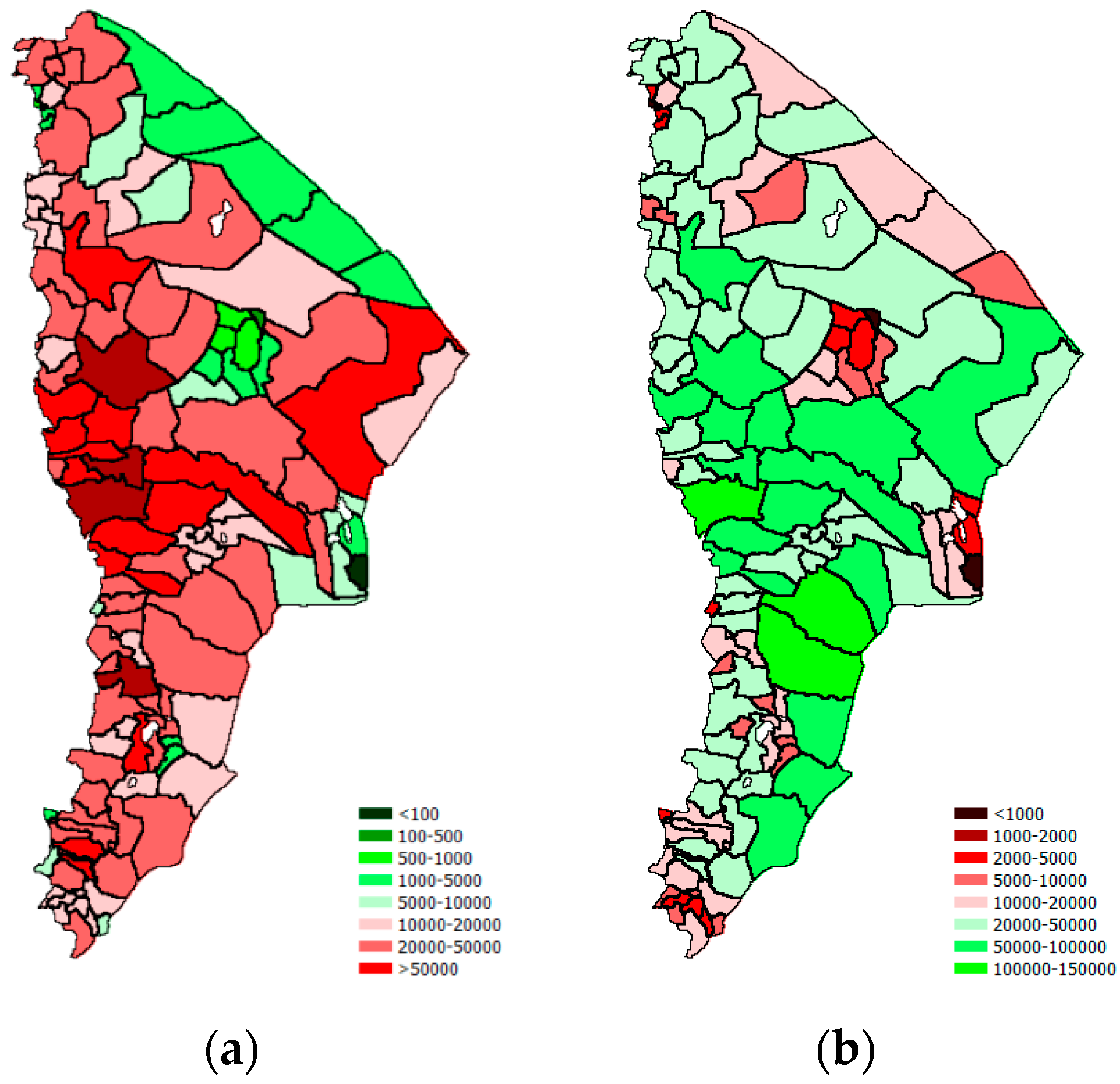
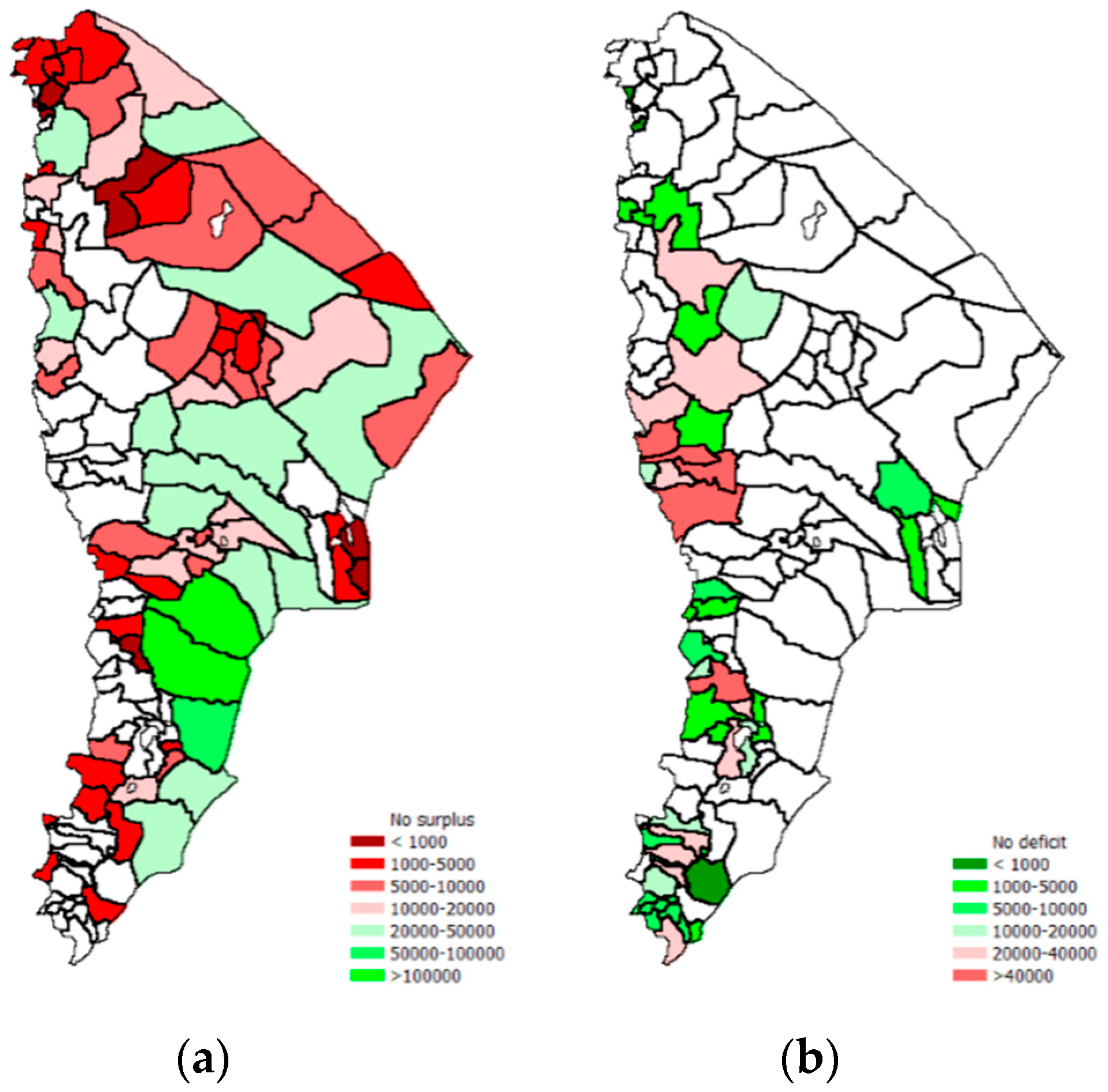

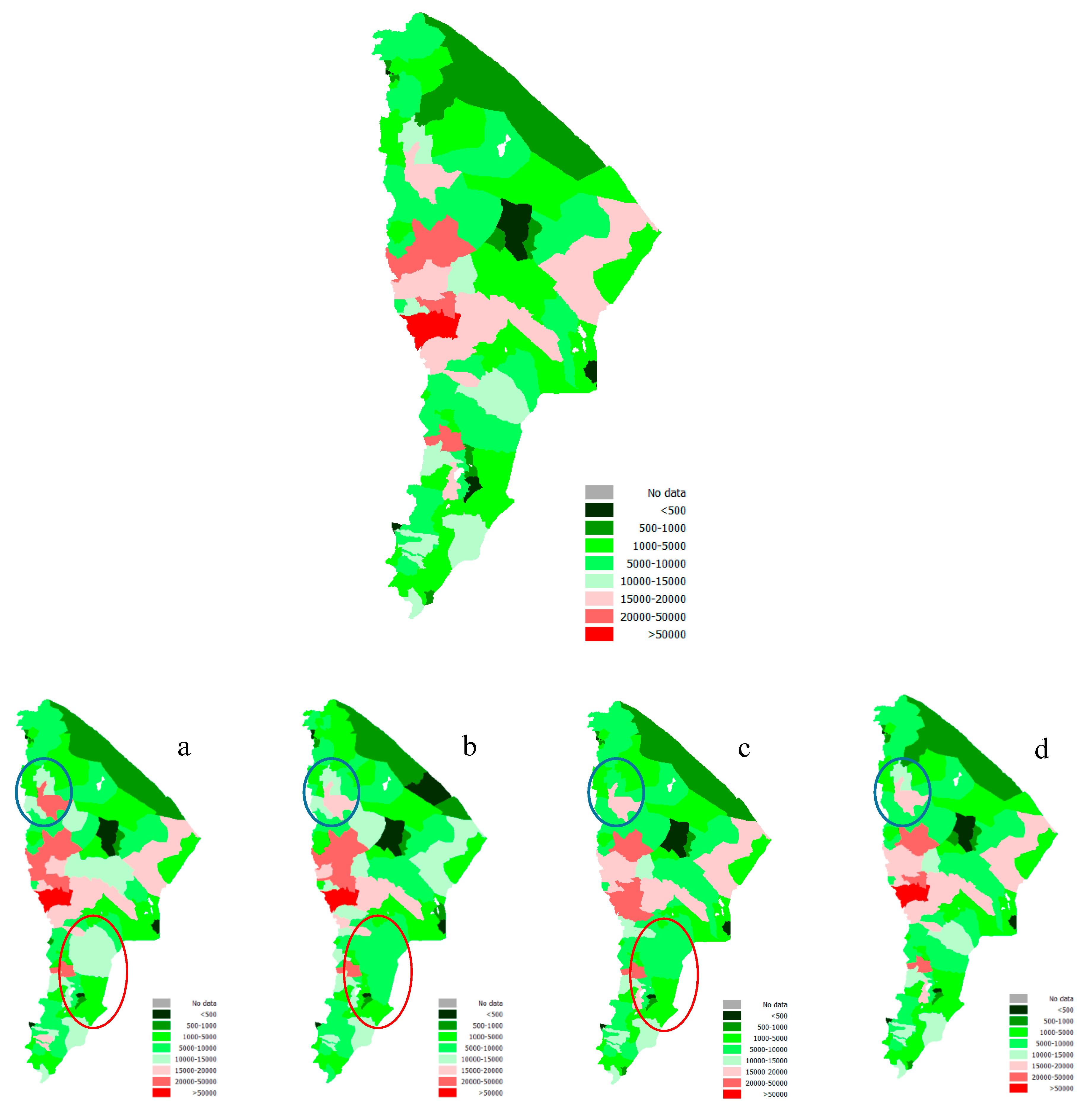

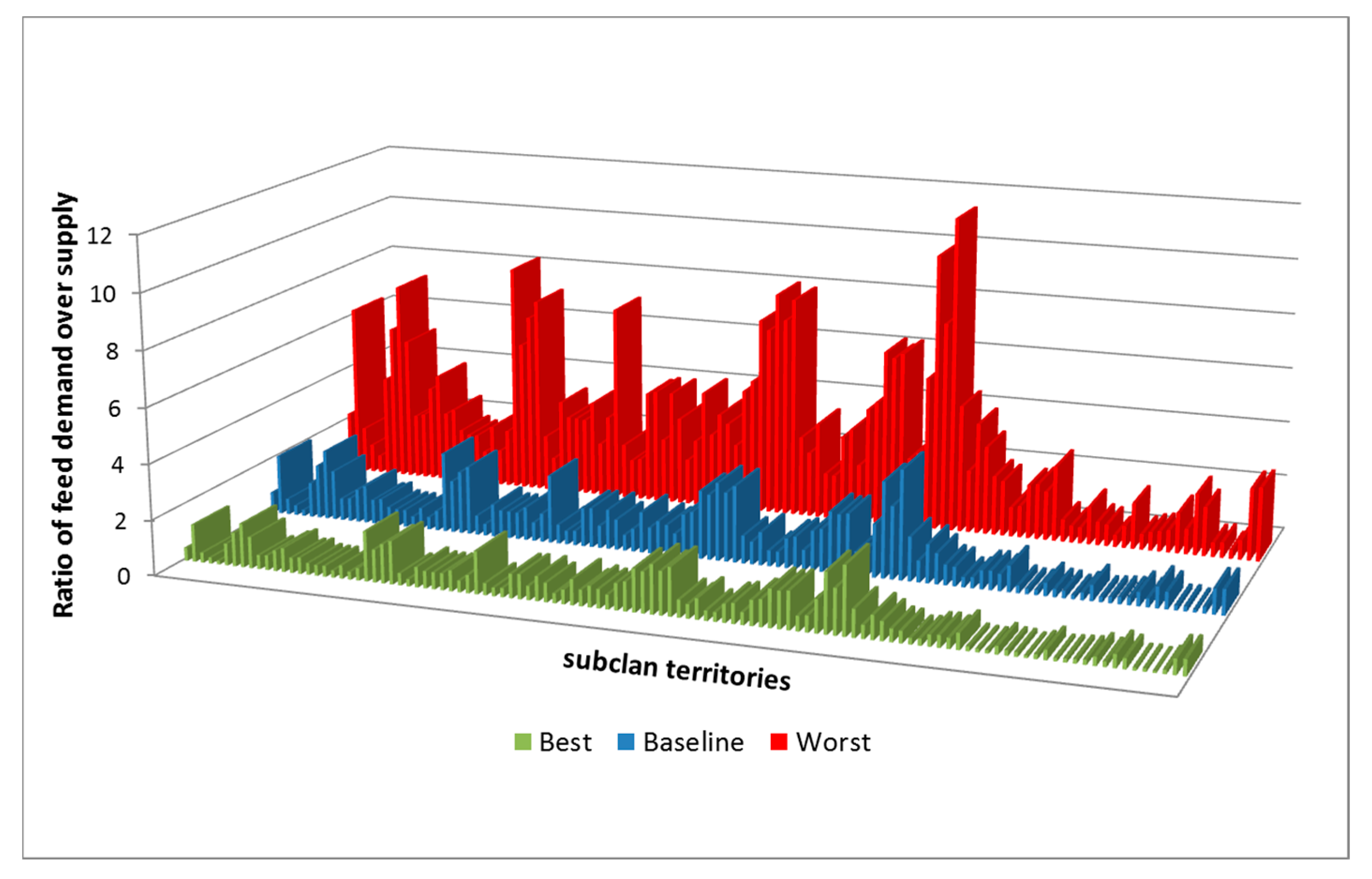
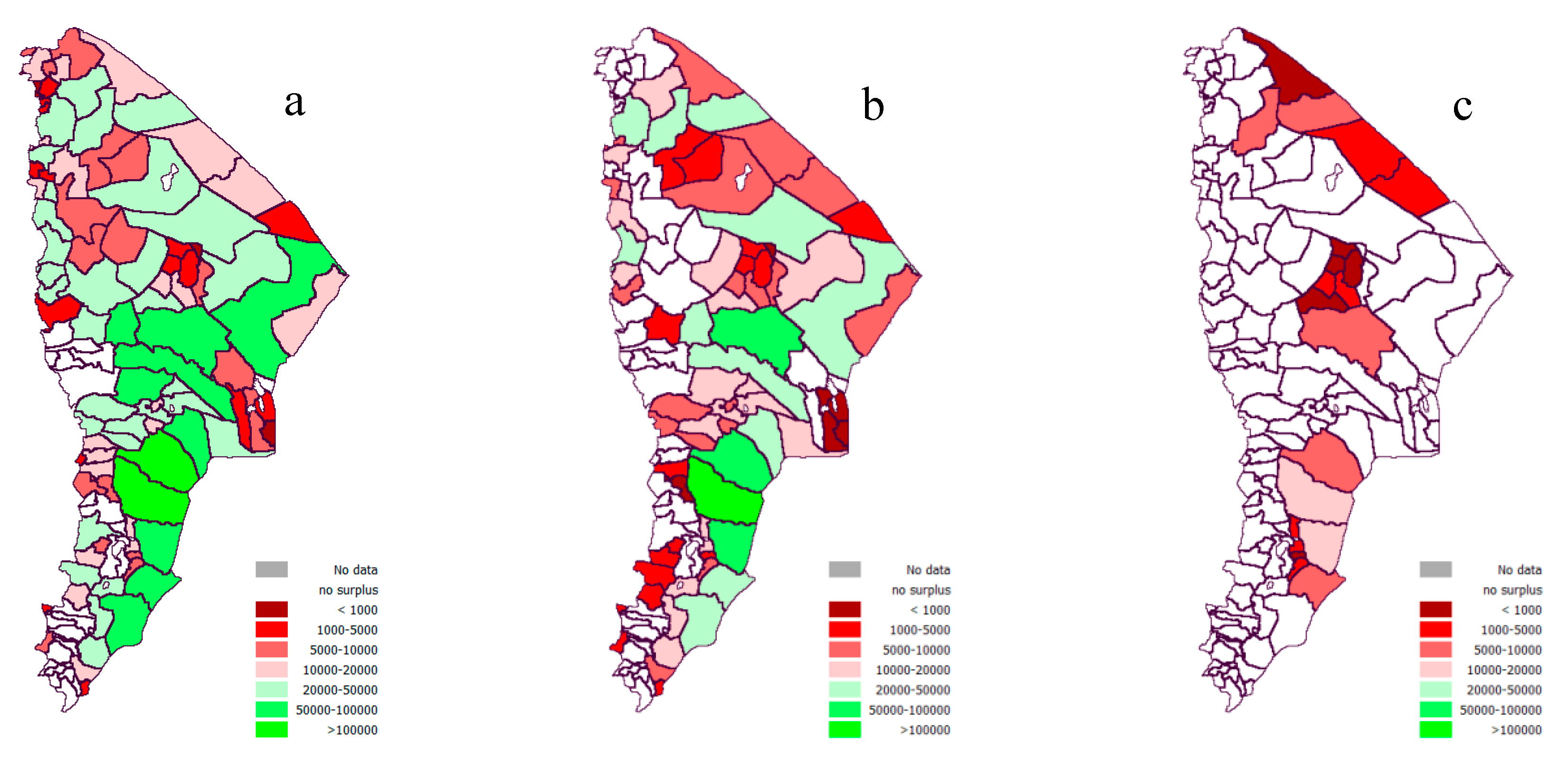
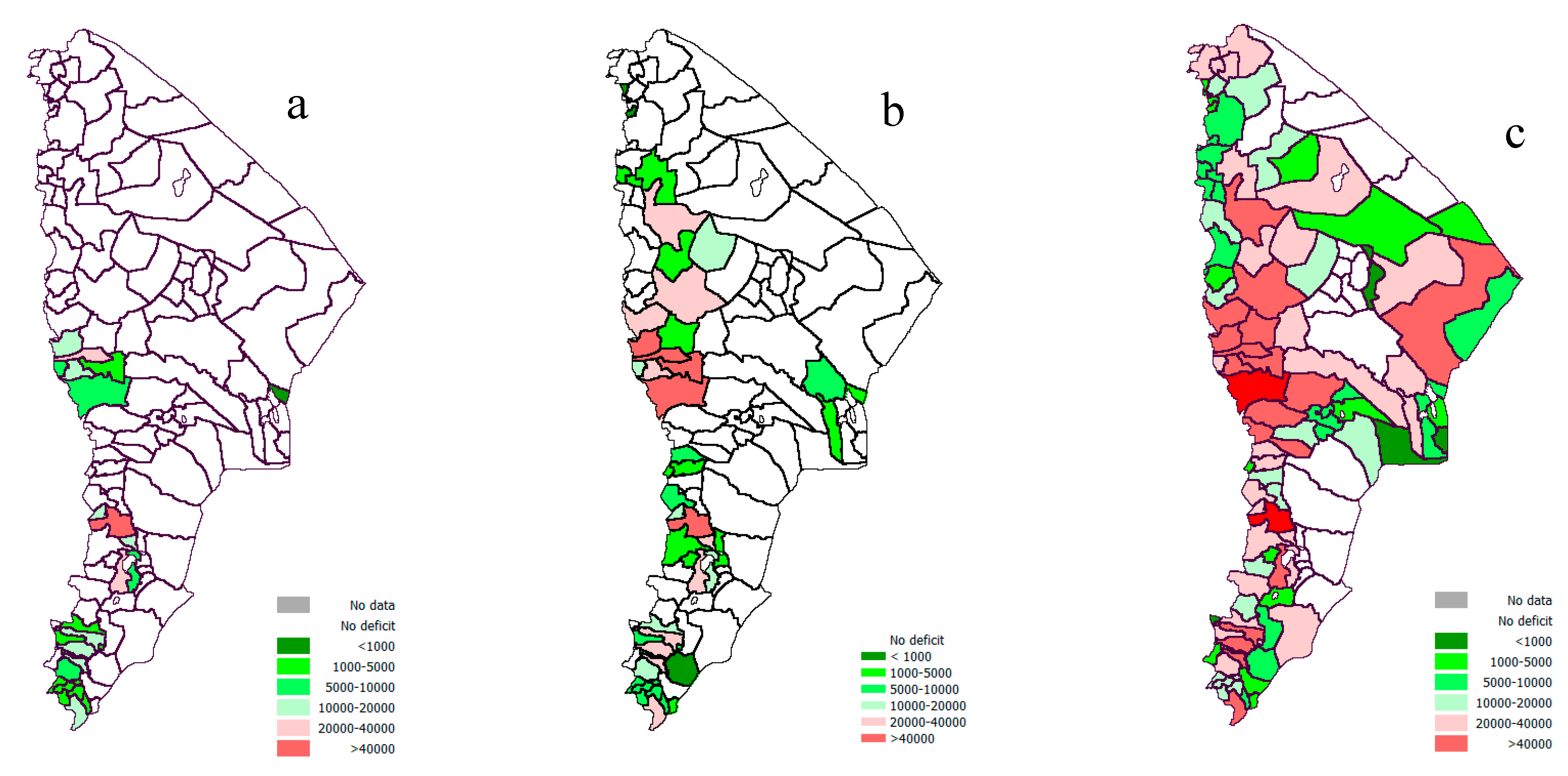
| Area | Equation (Number of Observation; R2) | Reference | |
|---|---|---|---|
| Amboseli (Tanzania) | Y = −367 + 3.8X | (6; 0.99) | [53] |
| Kiboko (Kenya) | Y = 262 + 4.41X | (38; 0.78) | [54] |
| Serengeti (Tanzania) | Y = 262 + 4.8X | (7; 0.93) | [55] |
| Tsavo (Kenya) | Y = 380 + 8.0X | (89; 0.65) | [56] |
| Serengeti (Tanzania) | Y= −1644 + 10.7X | (12; 0.62) | [55] |
| Serengeti (Tanzania) | Y = -185 + 6.6X | (24; 0.90) | [57] |
| Athi (Kenya) | Y = -251 + 1.2X + 0.01X2 | (24; 0.95) | [58] |
| Serengeti (Tanzania) | Y = −1052 + 8.6X | (10; 0.56) | [55] |
| East Africa | Y = −195.77 + 8.49X | (32; 0.67) | [59] |
| Land Use/Cover Types | Production (Herbage Yield, ton/ha) |
|---|---|
| Moderately cultivated | 0.9 |
| Open grassland | 2.3 |
| Open grassland shrub-bed | 1.4 |
| Dense shrub-land | 0.3 |
| Open shrub land (Open bush shrub land) | 0.8 |
| Open woodland | 0.9 |
| Wooded grassland shrub bed | 1.5 |
| Riparian wood/shrub land/bush-land | 0.5 |
| Land Use Category | Rule Based Procedure to Assign EIAR/Werer Biomass to LUC of the Woody Biomass | Herbage Yield ton/ha |
|---|---|---|
| Bareland; Exposed rock | 0 | |
| Bareland; Exposed sand/soil | 0 | |
| Cultivated Land; Irrigated | 50% of Moderately cultivated | 0.45 |
| Cultivated Land; Rainfed; Cereal Land Cover System; lightly stocked | 50% of Moderately cultivated | 0.45 |
| Cultivated Land; Rainfed; Cereal Land Cover System; moderately stocked | 50% of Moderately cultivated | 0.45 |
| Cultivated Land; Rainfed; Cereal Land Cover System; unstocked (woody pl) | 50% of Moderately cultivated | 0.45 |
| Forest; Montane coniferous; Open (20–50% crown cover) | Open woodland | 0.9 |
| Forest; Riparian; Dense (5–80% crown cover) | 50 % Riparian wood/shrub land/bush-land | 0.25 |
| Forest; Riparian; Open (2–50% crown cover) | Riparian wood/shrub land/bush-land | 0.5 |
| Grassland; lightly stocked | Open grassland | 2.3 |
| Grassland; moderately stocked | 50% Open grassland | 1.2 |
| Grassland; unstocked (woody plant) | 25% Open grassland | 0.6 |
| Shrubland; Dense (>50% woody cover) | Dense shrub-land | 0.3 |
| Shrubland; Open (20–50% woody cover) | Open shrub land (Open bush shrub land) | 0.8 |
| Wetland; Open water | Riverside | 0.5 |
| Wetland; Perennial Swamp/Marsh | 25% of Riverside | 0.13 |
| Wetland; Seasonal Swamp/Marsh | 50% of Riverside | 0.25 |
| Woodland; Dense (>50% tree cover) | 50% of Open woodland | 0.45 |
| Woodland; Open (20–50% tree cover) | Open woodland | 0.9 |
| Source Equation | Forage Production, Rain Dependent (1000 ton) | Forage Yield Rain Dependent (ton per ha) | Max TLU Rain Dependent (in 1000) | Forage Production adj. Land Charact. (1000 ton) | Forage Yield adj. Land Charact. (ton per ha) | Max TLU. adj. Land Charact. (in 1000) |
|---|---|---|---|---|---|---|
| [53] | 5029 | 0.7 | 2624 | 3714 | 0.5 | 1615 |
| [54] | 7506 | 1.0 | 3916 | 5405 | 0.8 | 2350 |
| [55] | 8113 | 1.1 | 4233 | 5846 | 0.8 | 2542 |
| [56] | 13,384 | 1.9 | 6983 | 9652 | 1.3 | 4197 |
| [55] | 12,679 | 1.8 | 6615 | 9485 | 1.3 | 4124 |
| [57] | 9832 | 1.4 | 5130 | 7170 | 1.0 | 3117 |
| [58] | 12,010 | 1.7 | 6266 | 9413 | 1.3 | 4093 |
| [55] | 10,844 | 1.5 | 5658 | 8052 | 1.1 | 3501 |
| [59] | 12,751 | 1.8 | 6652 | 9290 | 1.3 | 4039 |
| Average | 10,239 | 1.4 | 5342 | 7559 | 1.0 | 3286 |
| Rainfall (mm) | 200 | 400 | 600 | 800 | Source |
|---|---|---|---|---|---|
| West Africa | 0.6 | 1.1 | 1.7 | 2.2 | [61] |
| Zimbabwe (water holding cap.: 100 mm) | 0.5 | 1.7 | 2.2 | 2.5 | [62] |
| Zimbabwe (water holding cap.: 200 mm) | 0.7 | 2.6 | 3.2 | 3.7 | [62] |
| Kenya | 1.1 | 2.3 | 3.6 | - | [63] |
| Data | Source | Spatial coverage | Year |
|---|---|---|---|
| Gebremeskel (2012) | [60] | Zone 1, 3, 4 | 2006 |
| CSA03 | [65] | 29 Woredas | 2003 |
| REGA_08 | [66] | 29 Woredas | 2008–2009 |
| CSA (2011) | [64] | Zone 1,3 | 2011 |
| ESGPIP | [67] | Region-wide | 2005 |
| LDMPS | [68] | Region-wide | 2006 |
| BOFED | [69] | Region-wide | 2009 |
| REGA13 | [70] | 31 woredas | 2013 |
| Belig | Keremet | Bega | Tsedaye | |
|---|---|---|---|---|
| Average | 30% | 49% | 20% | 8% |
| Minimum | 13% | 30% | 8% | 3% |
| Maximum | 36% | 58% | 34% | 13% |
| Herd Estimate | Dry Matter | TLU Conversion | |
|---|---|---|---|
| Scenario 1 | Low | Low | Low |
| Scenario 2 | Low | Low | Base |
| Scenario 3 | Low | Low | High |
| Scenario 4 | Base | Low | Low |
| Scenario 5 | Base | Low | Base |
| Scenario 6 | Base | Low | High |
| Scenario 7 | High | Low | Low |
| Scenario 8 | High | Low | Base |
| Scenario 9 | High | Low | High |
| Scenario 10 | Low | Base | Low |
| Scenario 11 | Low | Base | Base |
| Scenario 12 | Low | Base | High |
| Scenario 13 | Base | Base | Low |
| Baseline | Base | Base | Base |
| Scenario 14 | Base | Base | High |
| Scenario 15 | High | Base | Low |
| Scenario 16 | High | Base | Base |
| Scenario 17 | High | Base | High |
| Scenario 18 | Low | High | Low |
| Scenario 19 | Low | High | Base |
| Scenario 20 | Low | High | High |
| Scenario 21 | Base | High | Low |
| Scenario 22 | Base | High | Base |
| Scenario 23 | Base | High | High |
| Scenario 24 | High | High | Low |
| Scenario 25 | High | High | Base |
| Scenario 26 | High | High | High |
© 2017 by the authors. Licensee MDPI, Basel, Switzerland. This article is an open access article distributed under the terms and conditions of the Creative Commons Attribution (CC BY) license (http://creativecommons.org/licenses/by/4.0/).
Share and Cite
Sonneveld, B.G.J.S.; Van Wesenbeeck, C.F.A.; Keyzer, M.A.; Beyene, F.; Georgis, K.; Urbano, F.; Meroni, M.; Leo, O.; Yimer, M.K.; Abdullatif, M. Identifying Hot Spots of Critical Forage Supply in Dryland Nomadic Pastoralist Areas: A Case Study for the Afar Region, Ethiopia. Land 2017, 6, 82. https://doi.org/10.3390/land6040082
Sonneveld BGJS, Van Wesenbeeck CFA, Keyzer MA, Beyene F, Georgis K, Urbano F, Meroni M, Leo O, Yimer MK, Abdullatif M. Identifying Hot Spots of Critical Forage Supply in Dryland Nomadic Pastoralist Areas: A Case Study for the Afar Region, Ethiopia. Land. 2017; 6(4):82. https://doi.org/10.3390/land6040082
Chicago/Turabian StyleSonneveld, B. G. J. S., C. F. A. Van Wesenbeeck, M. A. Keyzer, F. Beyene, K. Georgis, F. Urbano, M. Meroni, O. Leo, M. K. Yimer, and M. Abdullatif. 2017. "Identifying Hot Spots of Critical Forage Supply in Dryland Nomadic Pastoralist Areas: A Case Study for the Afar Region, Ethiopia" Land 6, no. 4: 82. https://doi.org/10.3390/land6040082
APA StyleSonneveld, B. G. J. S., Van Wesenbeeck, C. F. A., Keyzer, M. A., Beyene, F., Georgis, K., Urbano, F., Meroni, M., Leo, O., Yimer, M. K., & Abdullatif, M. (2017). Identifying Hot Spots of Critical Forage Supply in Dryland Nomadic Pastoralist Areas: A Case Study for the Afar Region, Ethiopia. Land, 6(4), 82. https://doi.org/10.3390/land6040082







